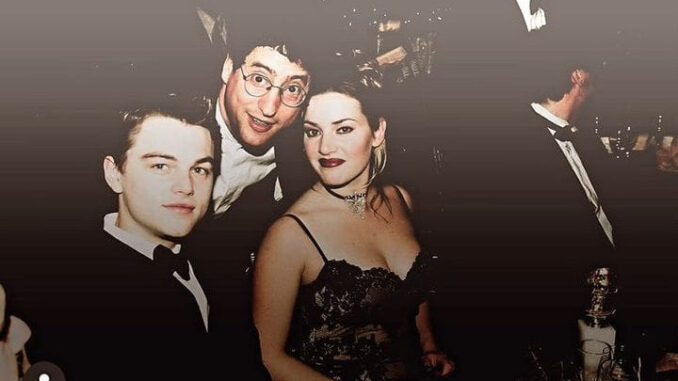
It’s been 25 years since James Cameron’s epic romance Titanic first graced cinema screens in December 1997, and this weekend the film marks the occasion with a return to the big screen — in 4K and 3D.
There are many factors that mark the film out as a blockbuster among blockbusters. Its whopping, $200 million budget — the most expensive film yet made at the time — allowed Cameron to take his renowned perfectionism to its logical conclusion, extensively exploring the wreck site before building a 750-foot replica ship in the Mexican desert.
Cameron is at pains to note that the set, 100ft shorter than the actual Titanic, was not a “90 per cent-scale replica” but “a 100 per cent-scale replica with a slice out here and a slice out there to shorten it”.

The chemistry between leads Leonardo DiCaprio and Kate Winslet stands among the all-time great Hollywood pairings and with 11 Oscars it is up there alongside Ben Hur as the most awarded film in Oscars history. It is also one of a handful of films to take more than $2 billion at the global box office, and the only one from before 2000 to do so.
Even its three-hour runtime was notable, successfully disproving 90s Hollywood orthodoxy that audiences would not tolerate films longer than a couple of hours.

For writer, editor, producer and director Cameron, however, it is the story alone that is the movie’s biggest star. “There have been much greater tragedies since Titanic, but it has this enduring, almost mythic quality to do with love, and sacrifice, and mortality,” Cameron tells The National from his New Zealand home. “The men who stepped back from the lifeboats so the women and children could survive, there’s something very elegant about the whole thing.”
The tragedy of the ill-fated ship’s demise has certainly resonated through the ages, and featured in numerous movie adaptations before Cameron’s 1997 opus came to screens. Perhaps his masterstroke was, against a backdrop of mass human tragedy, focusing on the more intimate tale of love between the fictional pairing of Jack and Rose.

“When we pitched it at 20th Century Fox, I went in with this big book of paintings of the Titanic, and I flipped it open to the centrefold, a big image of the Titanic sinking, the lifeboats rolling away, the rockets going off, an absolutely gorgeous image,” he recalls. “I said to to the head of 20th Century Fox: ‘Romeo and Juliet. On that.’ That was it. That was my pitch.”
Given the film’s rapturous reception, you could assume Cameron had already achieved perfection, but every few years it resurfaces in cinemas, and each time Cameron, always an evangelist for the latest movie technology, tweaks the template, this time with a 4k, 3D re-rub.
Despite the technological leaps over the past quarter of a century, however, Cameron insists that if he came to Titanic afresh in 2023, we’d see much the same movie as we did in 1997. “My impulses as a filmmaker, my aesthetic, they haven’t changed — I would still tell the love story,” he says.
“But the technique, everything is different now. We would use a lot more CG and build a lot less set. We would use CG crowds because now we know how to make it indistinguishable from photography. Our approach would be different, but the end result? I don’t think that would be different, not at all. We’d shoot the same script, we’d have the same values, the cinematography would look the same, but we wouldn’t be building a 750-foot set and tying up every light and bit of cable in Hollywood.”
One thing Cameron may treat differently is one of the most debated topics in modern cinema history — the question of (spoiler alert) whether, in the film’s dramatic closing scenes, when Jack sacrifices himself to allow his beloved to safely float on a passing door to await rescue, the pair could in fact both have survived on the makeshift raft.

It’s a question he has clearly heard more times than he would like, so in an effort to settle the debate once and for all, the perennial perfectionist has carried out a filmed experiment, using two stunt actors of the exact body mass of his leads, to scientifically determine whether the pair could both have survived.
Titanic: 25 Years Later With James Cameron screened on National Geographic in the US last weekend, with a global release on Disney+ expected imminently. In most scenarios, Cameron concluded that Jack would indeed have died, although his painstaking research did reveal certain scenarios in which Jack “just might have made it”.
The debate rages on then, but for Cameron the question is moot: “He needed to die. It’s like Romeo and Juliet. The love is measured by the sacrifice. Maybe I didn’t do it in a way that everyone agrees with, but Jack had to die.”
